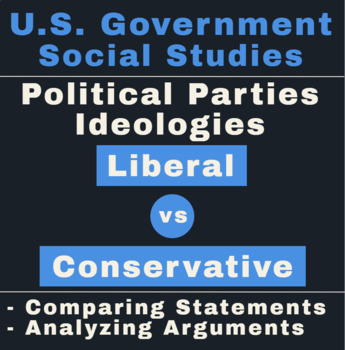Distance Learning | Political Party Ideologies: Liberal vs. Conservative
- PDF
What educators are saying
Description
For every major issue in America, two ideologies emerge: Liberalism and Conservatism. This resource allows students to read statements presented from both sides of the argument. For example, this assignment includes a short argument for or against key issues such as: abortion, climate change, affirmative action, gun control, immigration, welfare, and many more.
Students can analyze the arguments made and evaluate the ideological stance of each statement presented. There are 15 topics that are explored in detail; the assignment can be done in small groups or individually. With 15 topics and 2 arguments for each, it is a substantial assignment.
We also offer a larger version of this lesson, Political Parties Ideologies: Democrat & Republican Comparing & Analyzing the Arguments, that includes a student Self-Analysis to help students see what they believe on many issues.





